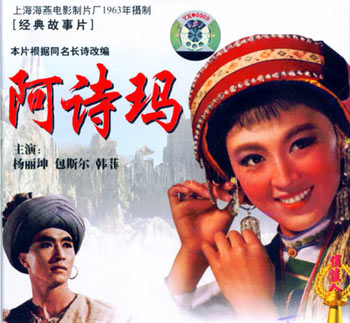Amongst his observations of Yunnan and Kunming, Marco Polo noted that the people there were particularly fond of raw meat. Like most people, I tend to associate raw fish with Japanese sushi and raw beef with Italian carpaccio or east European steak tartare. Uncooked meat is frequently brought to the table in China, but only to be cooked there by the diners themselves; not once in all my visits to China have I encountered a dish in which meat is eaten raw.
Is the eating of raw meant something unique to Yunnan then? Or have people simply outgrown their taste for it? It has been over 700 years, after all.
Armed with curiosity, I resolved that I would spend the next part of my life dedicated to a deep, thorough, and comprehensive study of Yunnanese cuisine. In other words, I googled around for about half an hour looking at some web pages. And while I didn’t find any dishes that resembled those described by Marco Polo, I did find many delightful things to share with you.
So without further ado, I give to you that most iconic of Yunnanese delights, Crossing the Bridge Rice Noodles, or 过桥米线 (guòqiáo mĭxiàn).

Most people seem to agree that the recipe for Crossing The Bridge Rice Noodles is somewhere between one and two hundred years old. There is not nearly so much agreement on how it got its name, I found the most fully realized telling of the most common story on a food adventure blog published by a couple in Vancouver called Chowtimes, which I have reproduced below. They in turn appear to have gotten it from a sign posted on the side of a food stall in Yunnan itself. Like many Chinese translations the prose is quirky, and calls out the many grammatical differences between their language and ours. But unlike many Chinese translations, I find that this passage loses none of its ability to communicate a sense of wonder and delight…
Cross Bridge Rice Noodle is a special dish of Yunnan. It is originated during the Qianlong period, nearly 200 years ago. There is a popular legend regarding its origins.
It is said that a scholar in Mengzi, who was preparing for the Imperial examination, went to an island in the Na Lake everyday to study. His wife went across the bride to the island to bring his meal to him. Owing to the long distance, he had to eat the meal cold everyday.
Accidentally, his wife discovered that a greasy chicken soup is not easy to get cold. What’s more, fresh ingredients, such as seasonal vegetable, fresh meat and so on, can become edible by putting them into this kind of boiled soup.
From then on, the scholar could have a delicious and hot meal everyday. Because his wife went across the bridge everyday, the rice noodle made this way was named as Cross Bridge Rice Noodle.
By now, the Cross Bridge Rice Noodle has a distinct development. The most important factor in this noodle is the soup. It was made with natural hen, pig bone and ham. It needs to be boiled for over 6 hours until the soup become savory and the oil from these are distilled.
The next thing worth mentioning is the ingredients. There are two kinds of rice noodles. The proper kind is the slim one, which is good at keeping the flavour of the valuable soup. The ingredients can be divided into two categories: vegetable and meat. The vegetable used are dependent on what is in season. The meat is focus on slice. The thinner the better, so the slice meat is one of the characteristics of the Cross Bridge Noodle.
Last but not least, the process of eating is special. The right orders are as follows: firstly, put the meat slice in the soup, then the vegetable, the last one rice noodle. Minutes later, a hot colorful and delicious Cross-Bridge Rice Noodle is ready.
So there, in authentic Chinese English, is the story of Crossing the Bridge Rice Noodles. As you can see in the above photo, the final dish is built at the table by the diners themselves. That is probably the thing I enjoy most about Chinese food in general; more than any other cuisine I know of, the eating of Chinese food is designed to be a social activity, shared with family, friends, and colleagues. I cannot wait to come to Kunming and try it with my team.

 Rubing (乳饼 – rǔbǐng) is a cheese made by the local Bai and Sani minorities of Yunnan province, and is quite popular there. It is a farmer cheese, which means that it is served fresh rather than aged, and is made from goats milk that has been soured with the extract of a local vine called 奶藤 (năiténg), or literally “milk cane”.
Rubing (乳饼 – rǔbǐng) is a cheese made by the local Bai and Sani minorities of Yunnan province, and is quite popular there. It is a farmer cheese, which means that it is served fresh rather than aged, and is made from goats milk that has been soured with the extract of a local vine called 奶藤 (năiténg), or literally “milk cane”.
















